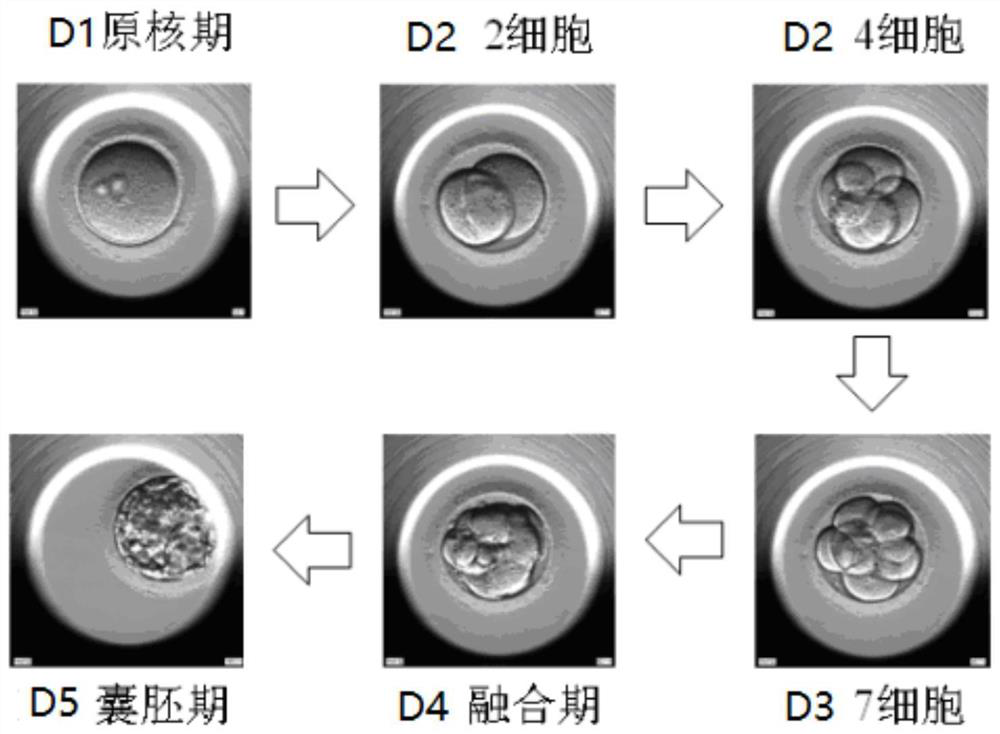Embryo Automatic Recognition Method Based on Image Processing
An automatic recognition and image processing technology, applied in the field of embryo detection, can solve the problems of false circles and false ellipses in the recognition results, interference of embryo fragments in the petri dish aperture, and loss of blastomere edge details, etc., so as to improve objectivity and ensure comprehensive performance and high recognition accuracy
- Summary
- Abstract
- Description
- Claims
- Application Information
AI Technical Summary
Problems solved by technology
Method used
Image
Examples
Embodiment 1
[0027] figure 1 A schematic diagram of the structure of the image processing-based automatic embryo identification method in Example 1 of the present invention is given, as figure 1 As shown, the automatic embryo identification method based on image processing includes:
[0028] (A1) Edge detection based on EDContours algorithm: Using the EDContours algorithm, in different scale spaces, the original image is convolved with a Gaussian kernel, and the edge detection result is obtained by using the edge stacking operation of the EDPF algorithm. The number of operations is 15-30, preferably 21.
[0029] 2) Line segment drawing based on the EDCircles algorithm: Use the EDLines of the EDCircles algorithm to fit the edge segment as a line segment, and then use the Helmholtz principle to remove the pseudo-line segment to obtain a line segment diagram.
[0030] 3) Arc synthesis based on EDCircles algorithm: Combine the line segments that meet the conditions into arcs.
[0031] 4) Ci...
Embodiment 2
[0050] An application example of the automatic identification method based on embryo images according to Embodiment 1 of the present invention.
[0051] In this application example, as figure 2 As shown, the present invention is mainly applied to embryo images presented on the first day (D1), the second day (D2) and the third day (D3) of the embryonic development process.
[0052] The image processing-based automatic embryo identification method of the present embodiment includes the following steps:
[0053] (A1) Read embryo images and perform image preprocessing:
[0054] 1) Input an image I[x,y] to be processed, such as figure 1 As shown in (a), the initialized contour map ContourMap[x,y]=0, δ=1.0.
[0055] 2) Calculate the t value (scale parameter, representing the scale space level), t=δ×δ;
[0056] 3) Convolve the original image with the Gaussian kernel L(I[x,y],t):
[0057]
[0058] 4) Use the EDPF algorithm to perform edge detection on the convolution result, Ed...
PUM
 Login to View More
Login to View More Abstract
Description
Claims
Application Information
 Login to View More
Login to View More - R&D
- Intellectual Property
- Life Sciences
- Materials
- Tech Scout
- Unparalleled Data Quality
- Higher Quality Content
- 60% Fewer Hallucinations
Browse by: Latest US Patents, China's latest patents, Technical Efficacy Thesaurus, Application Domain, Technology Topic, Popular Technical Reports.
© 2025 PatSnap. All rights reserved.Legal|Privacy policy|Modern Slavery Act Transparency Statement|Sitemap|About US| Contact US: help@patsnap.com



